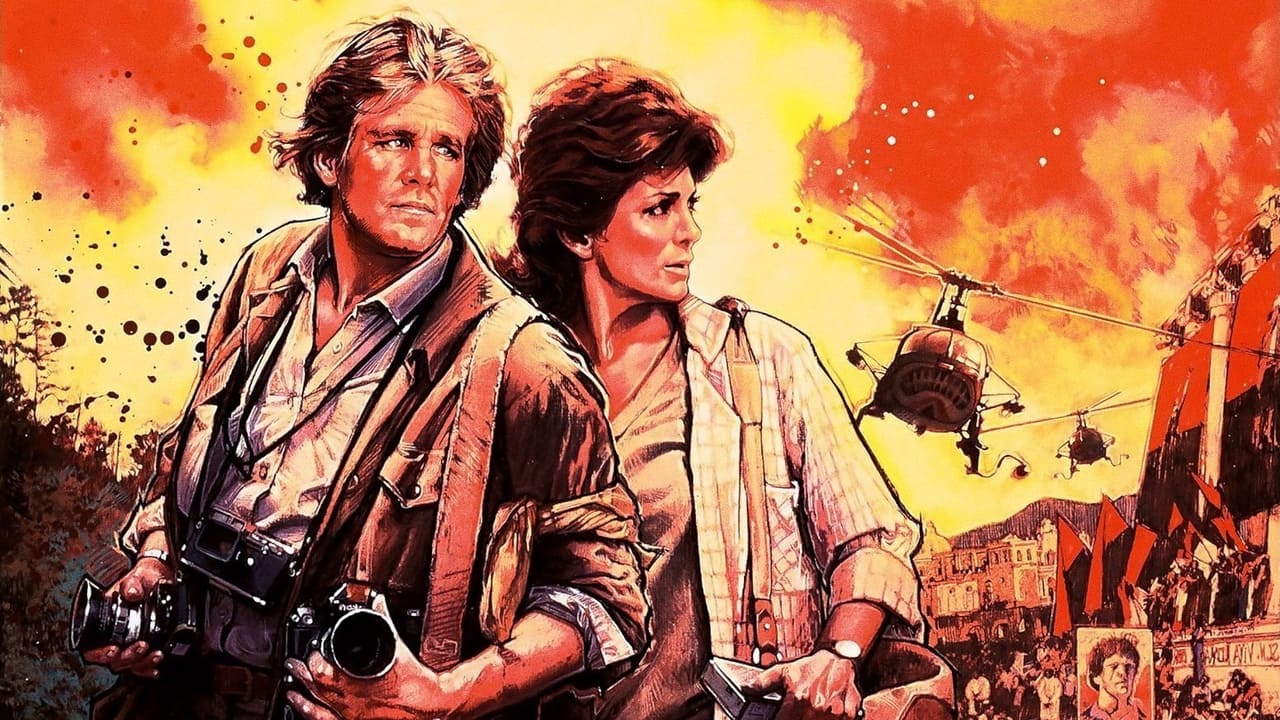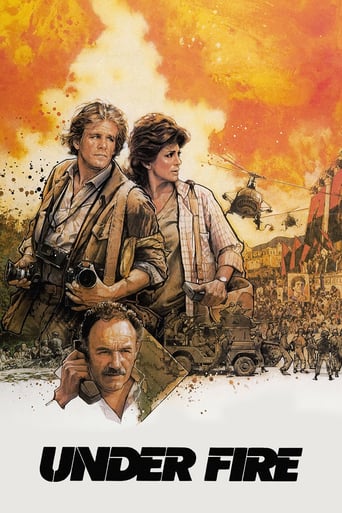

I worked in Nicaragua from February, 1971 to May, 1979. I also owned an Island off the Southeast Coast of Nicaragua near Monkey Point.The "popular" view by most filmmakers and "news people" of the time, viewed President Somoza as an evil man. What was thought to be a "saving Grace" for Nicaragua was a new Government.What everyone there GOT was a Socialist/Communist takeover fueled by the Left and (then) President- Jimmy Carter, who even blackmailed Israel into not helping the Contras and President Somoza.I always fume when I see "stories' of people and places written by people who were NEVER THERE. I WAS THERE. I SAW it FIRST HAND.President Somoza wasn't perfect. No one IS. But what they got was FAR WORSE. Nicaragua has been in my Family since 1928, when my Father and the U.S. Marines went there to help prevent Augusto Sandino from taking the country. My Association with my beloved Nicaragua ended in 1995.
... View MoreFirst of all, I love this movie. The emotional atmosphere that is generated by director Robert Spottiswoode so illuminated for me the tensions of the sixties and particularly the Life and Times of President Kennedy's Camelot and Malcolm X's comment about 'chickens coming home to roost'. Many people misunderstood this comment when it was originally if somewhat indiscreetly made. Malcolm X was simply saying that when you live and work and earn your pay in an atmosphere of violence you should not be surprised when that atmosphere randomly and unexpected recoils against you or explodes in your face.Great Art can do this sometimes. That is, clarify on a visceral or emotional level the substance of a cultural trauma such as the martyrdom of political figures or the unimaginable catastrophic tragedy of an event like 9/11. Watching Russell Price, played by Nick Nolte and his lover, Claire Grazier, played by Joanna Cassidy, enter a zone of volatile political conflict and then emerge unscathed through the other side of the labyrinth caused me a palpable sense of relief. I felt the resolution of the piece to be as satisfying as any catharsis in the theater, but particularly suitable for the Cinema. At the end of UNDERFIRE I felt I understood something I did not understand before due to not being able to handle the charge of my emotions about it or the charge of the issues themselves. This new understanding was not exactly something I could put into words. But it had something to do with viewpoint and truth and the merchandising of political unrest and how a martyr can be put to the best possible political use.Russell Price is a globe-trotting photo-journalist who covers war torn countries as part of his stock and trade. He ends up taking pictures of a true event of violent death involving a colleague, but before that crosses the lines of journalistic ethics to help the people create a martyr and myth for the revolution. The people's revolution wins out not in small part to Price's pictures. But it's hard to say which set of pictures has the greater influence; the set recording the facts or the set bending the facts to create a hero for the revolution.UNDERFIRE speaks to the value of life and death in terms of dollar and cents, national destinies and simply the value of the life of a man of western privilege compared to the life of a man representing the aspirations of the grassroots. It is also about the priorities of belief and how these priorities can shift in the blink of an eye, as fast as the report of a rifle or the flight of leaflets out of the sky or even the mind of a mercenary just keeping the playing field level. The musical score of Jerry Goldsmith is haunting and memorable, and a part of it found itself borrowed for Quentin Tarantino's DJANGO UNCHAINED, but here serves its purpose to its full glory. Pat Metheny deserves mention for the ethnic and guitar music. The tense visual sense of the environment and its rubble filled streets is largely the work of John Alcott, Director of Photography. While Oates the mercenary played by Ed Harris, Alex Grazier, the soon to be National News anchor being kicked upstairs out of Nicaragua and played by Gene Hackman, along with the wily and elegant Jean-Louis Trintigant representing the French branch of the CIA, round out the authenticity of the ensemble.
... View MoreThe movie takes place in Nicaragua where Nick Nolte is searching for the angle on the story of the revolution that's taking place. Nobody really cares about the revolution in Nicaragua stateside, until he notices the face of the revolution. Anytime he sees people waving the face of the leader of the revolution, there's the militia that's suppressing it and getting it out of view instantly. Nobody except the revolutionaries really knows who or where this person is. So he goes on a quest to find him and take his picture, which has never been done.He meets a mercenary (Ed Harris) in the process who's on the militia's side and sees him kill one of the revolutionaries Nolte's befriended. This guy could've easily been the next Cy Young stateside by the way he was able to accurately throw a grenade at Ed Harris and some of his militia-men attacking them from a bell tower. Ed Harris survives the blast and snipes him back with a vengeance when it's least expected.Well, no more juicy details but basically the war shifts into the 5th gear and Nolte's in the middle of it and discovers something really profound. Eventually he captures a moment in history and changes the tide of war by his excellent work, while risking life.He should've earned a medal of honor right there and then for that, if they do that type of stuff.Anyways, this one is definitely worth checking out. I caught it on HBO at like 4 in the morning and had to stay up to finish watching it. It was just so captivating.
... View MoreThere's an "Under Fire" spoiler here --Blaine3 compares Under Fire somewhat unfavorably with Oliver Stone's Salvador because Under Fire is fiction and Salvador is based on a real reporter's experience. I hope that doesn't deter you from renting this one, or lead you to think that Under Fire is excessively unrealistic or melodramatic. One of the climactic events in Under Fire, the murder of a top American reporter, was based on the murder in 1979 of ABC News correspondent Bill Stewart, who was shot to death in Managua, Nicaragua, by a member of President Anastasio Somoza's national guard. The whole event was caught on videotape by other American reporters and aired in the U.S.In any event, Stone is quite well known for shading and bending historical facts in the interest of telling a good story from his point of view. In that sense, I doubt Salvador is any more "real" than Under Fire.One of the things I appreciate most about Under Fire is that it created a great role, that of a glamorous yet competent professional woman, a mother, working in a dangerous place, and gave it to an actress over the age of 35 (much rarer 22 years ago than it is now). Joanna Cassidy did a great job with it.
... View More